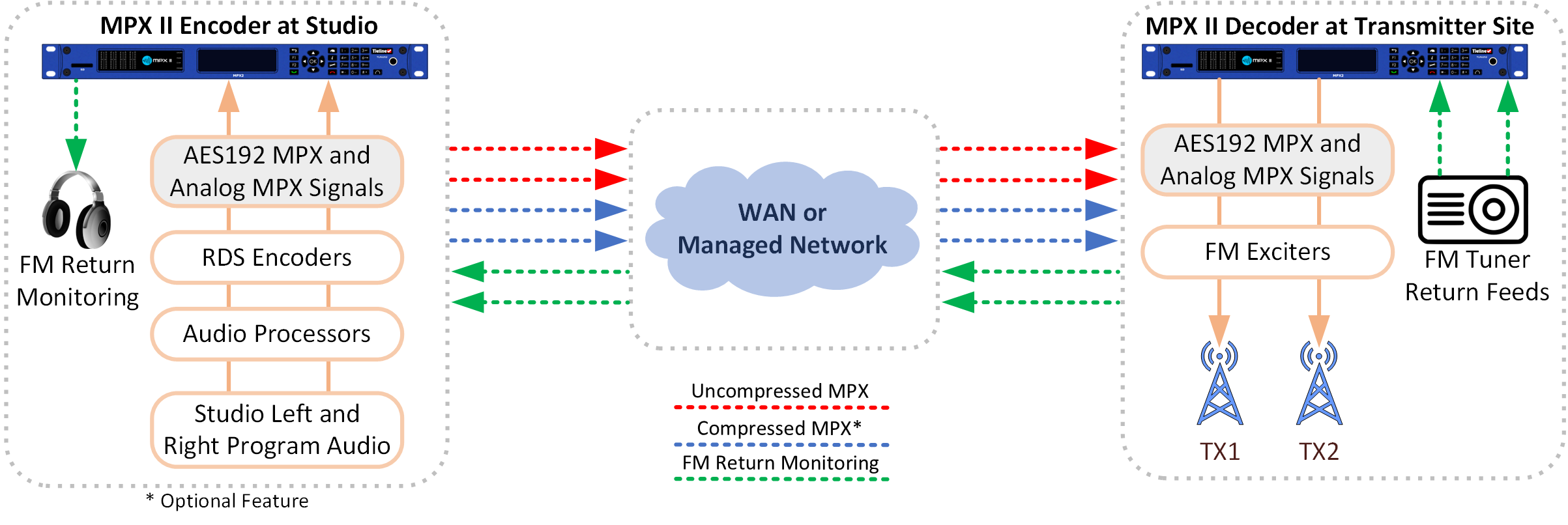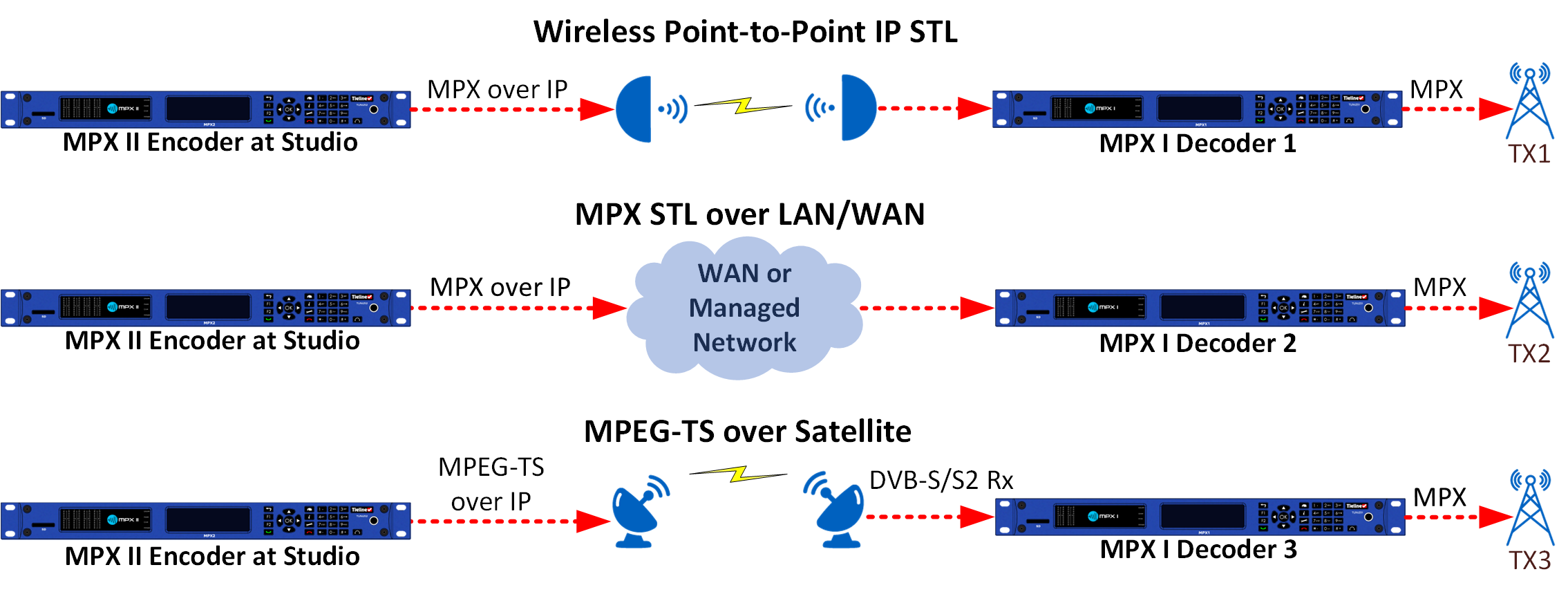The author is VP Sales Americas for Tieline. This is excerpted from the ebook “Trends in Codecs 2024.”
Transporting composite MPX signals from the studio to transmitter sites delivers a more streamlined and cost-effective approach to FM radio broadcasting.

MPX codecs deliver composite FM multiplex (MPX) codec solutions for real-time network distribution of FM-MPX or MicroMPX (µMPX) signals to transmitter sites.
In the United States and Europe, the ability to syndicate a single or dual stereo baseband stream to multiple sites at once is attractive. It allows broadcasters to maintain baseband audio processing and RDS data insertion at the studio.
This significantly reduces capital and operational costs by eliminating equipment from transmitter sites and dramatically reduces a network’s carbon footprint by lowering on-site power consumption. It also reduces wiring and rack space requirements and fewer site visits for service and support are required.
When looking to purchase MPX codecs, engineers will have varying requirements based on the hardware currently installed at their studio and transmission sites. At the same time, it is best to try to “future proof” your investment in MPX codecs by ensuring you have the ability to not only manage current requirements but also consider future analog to digital upgrades.
This is why it is important to support both analog MPX on BNC, MPX over AES192, and multipoint signal distribution, to deliver a range of flexible composite encoder and decoder solutions for different applications. This allows you to implement analog MPX solutions as required and then transition to digital MPX signals at a later time using the same MPX codec.
MPX signals can be distributed to transmitter sites using:
- Wireless point-to-point STL links
- Managed networks and unmanaged public WANs
- Satellite links using MPEG-TS.
The preferred option usually depends on the remoteness of a tower site and its available IP bandwidth.

Significant cost savings
MPX codecs offer a unique advantage compared to traditional STL paths. They operate over IP and allow syndication from a single uplink point. This eliminates the need for a more complex on-air signal path at each specific tower location.
Distribution of MPX composite signals from the studio or playout center via multicasting or multi-unicasting substantially reduces costs by eliminating expensive audio processing and RDS generation requirements at multiple STL sites. This process affordably replicates MPX composite streams using a single encoder, similar to how baseband IP audio streams are replicated in audio codecs. Compressed MicroMPX composite signals can be distributed over WANs like the internet at low bit rates to reduce bandwidth requirements.

MPX data requirements
In the long run, MPX codecs will help streamline the process of getting baseband audio to the tower site from the studio.
In the short term I do not expect every single engineer in the country to go out and buy an MPX codec. However, I do foresee station engineers looking at MPX codecs in coming years as equipment ages and needs to be replaced. Not every site is ready to go with an MPX codec or signal, as it does require more bandwidth than is traditionally required for a standard 48 kHz 24-bit stream.
The payload requirement varies. Digital MPX over AES (AES192) requires between 2.3 Mbps (16-bit) and 4.6 Mbps (24-bit). This requires high-capacity managed IP links with reliable QoS. Compressed MicroMPX is supported at much lower bit rates, although higher than many regular IP audio connections, and can successfully connect over both managed and unmanaged IP links.
Even with a compressed MicroMPX signal, there are still some parts of the USA that can barely get 56 kbps internet service. This is one of the reasons Tieline added a traditional codec for basic IP connections into the MPX I and MPX II codecs. This allows engineers to grow their MPX network incrementally as their sites become capable of handling higher bit rate streams over time.
MPX redundancy and packet loss strategies
Redundant streaming over divergent carriers and paths avoids packet loss over unmanaged IP networks like the internet. Forward Error Correction (FEC) is another packet recovery strategy.
Reliable Internet Stream Protocol (RIST) is an open-source protocol that can detect loss over a network and request the retransmission of lost packets. The benefit of RIST is its ability to minimize required bandwidth. Automated file failover can provide backup if a catastrophic failure occurs on the transmission side.
With management and configuration software delivering full remote monitoring and control, automated alarms and SNMP monitoring, a fully integrated MPX transmission solution is at your fingertips.






